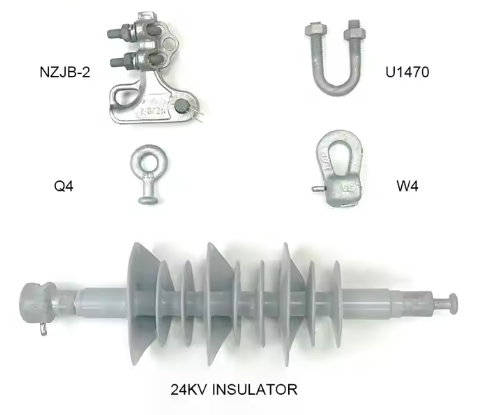High-voltage composite insulators are essential components in the power industry, designed to withstand extreme conditions while ensuring safe and efficient transmission of electricity. These insulators are made from advanced composite materials that provide superior performance compared to traditional ceramic or glass insulators. The main types of high-voltage composite insulators include suspension insulators, line post insulators, and strain gauge insulators, each of which is tailored for specific applications in power transmission and distribution systems. As the demand for reliable and efficient power infrastructure continues to grow, understanding the various types of high-voltage composite insulators is critical for industry professionals and stakeholders.
The applications for high-voltage composite insulators are wide and varied. They are primarily used in overhead transmission lines, substations, and renewable energy facilities such as wind and solar farms. They are lightweight and easy to handle and install, which reduces labor costs and time. In addition, high-voltage composite insulators are resistant to environmental factors such as pollution, moisture, and UV radiation, making them ideal for use in harsh climates. This durability ensures a longer service life and lower maintenance requirements, which are significant advantages for utility companies looking to optimize their operations.
When considering the advantages of high voltage composite insulators, there are several key factors to consider. Firstly, their lightweight design not only simplifies installation but also reduces the mechanical load on the supporting structure. Secondly, the composite materials used in their construction offer excellent electrical insulation properties, which improves safety and reliability. In addition, these insulators also offer excellent resistance to tracking and corrosion, which are detrimental to traditional insulators. However, some disadvantages must be acknowledged, such as their higher initial cost compared to traditional insulators and the need for expertise to install and maintain them.
The market outlook for high-voltage composite insulators is promising, driven by the growing demand for electricity and the need to modernize power infrastructure. As countries around the world invest in upgrading their power grids and integrating renewable energy, the demand for high-voltage composite insulators is expected to increase significantly. In addition, the growing emphasis on sustainability and environmental protection is driving utility companies to adopt more efficient and durable materials, further driving the composite insulator market. Industry experts predict that this segment will show a steady growth trajectory, with innovations in material science and manufacturing processes likely to improve performance and reduce costs.
In summary, high voltage composite insulators represent a significant advancement in electrical insulation technology, providing numerous benefits to power transmission and distribution systems. These insulators come in a variety of types for different applications and are becoming increasingly popular in the industry. While they have some disadvantages, the advantages they offer, coupled with a promising market outlook, make them a top choice for utility companies and electrical engineers. As the energy landscape continues to evolve, high voltage composite insulators will play a key role in ensuring the reliability and efficiency of our power infrastructure.
Post time: Apr-02-2025

